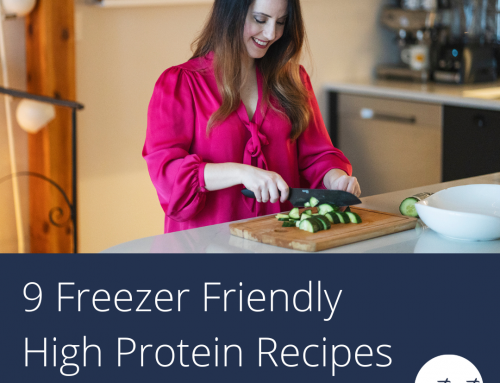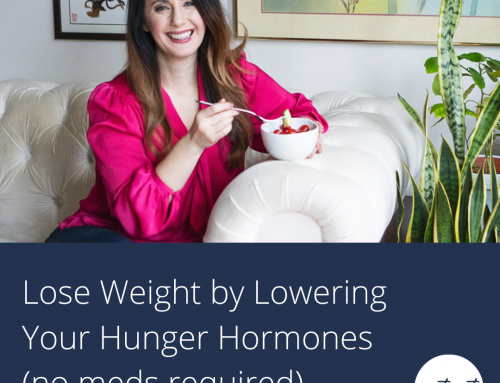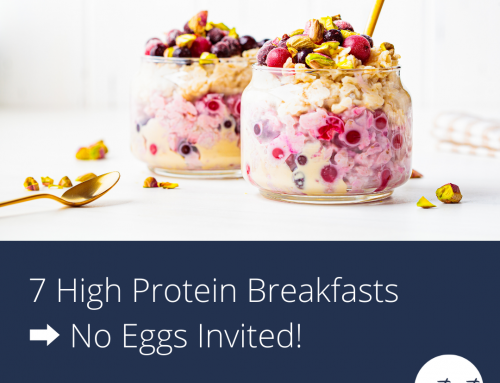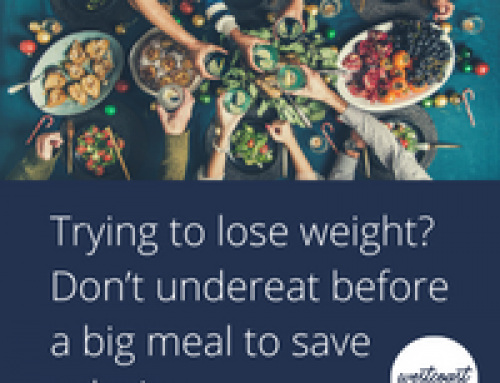Tired of getting stuck in a Pinterest hole looking for healthy recipes? Just about any tried and true dish can be turned in to a balanced meal with a little tweaking.
One of the biggest challenges of meal planning when clients are getting started is the sheer amount of time and energy it can take to overhaul your current repertoire. Anyone else spend surprising amounts of money on new cookbooks to go with a new diet, or 2 hours deep in to a Pinterest rabbit hole just to abandon them a few months later?
While adding new recipes and inspiration keeps things fresh, its actually much more important that the planning gets done (and food gets on the table) than the entire thing be new and perfect. That’s why starting with recipes you already know and love, and aiming for healthy-ish, can be SO much easier! Today we’ll take one of my favourite recipes and walk you through how I adapt it to fit a balanced plate.
Step 1: Find your recipe and a pen
While I LOVE cookbooks and inspiration, the easiest way to eat healthier right now is to adapt recipes you already know and enjoy. No need to wait for the perfect recipe or meal plan to get started.
Today we’re using one of my favourite recipes, Turkey Cheeseburger Soup! It’s from Skinnytaste (the name makes me cringe, but her recipes are generally delicious and well tested). While this is an instant pot recipe it would be super simple to do stove top, and everyone we’ve served it to has loved how cozy and deceptively creamy it is.
Step 2: Identify Main Food Groups
In order to make a recipe work for you, you need to know roughly what portions of carbs, to proteins to low carb veggies you’re aiming for. While many of my clients are eating a lower carb style for weight loss or improving insulin sensitivity and energy, others compete in endurance events or thrive on a more mid-range carb intake. Know what works for you and adjust accordingly. Today we’ll be aiming somewhere in the middle. I highly recommend actually using pen and paper the first few times, it really helps simplify things.
Let’s start with proteins – you can see that turkey is the only significant protein source here (cheese will provide a little boost, but not enough to really influence the numbers).
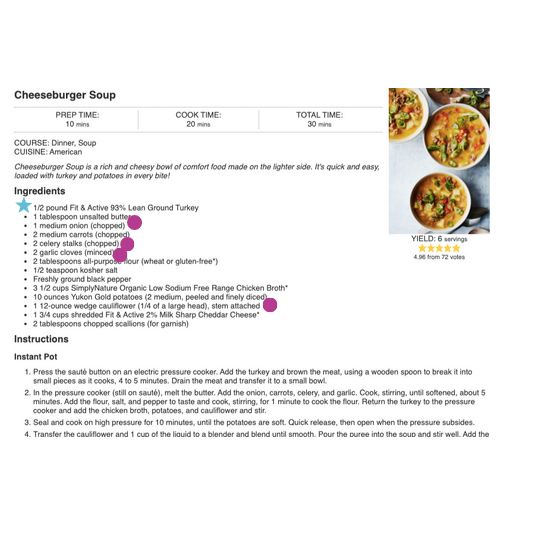 Now we move on to our low carb (non-starchy) veggies. We want at least half the recipe by volume to be these guys for fibre, vitamins, minerals and anti-oxidants. DNA repair, steady energy, and a filling meal depend on it.
Now we move on to our low carb (non-starchy) veggies. We want at least half the recipe by volume to be these guys for fibre, vitamins, minerals and anti-oxidants. DNA repair, steady energy, and a filling meal depend on it.
Finally, make a note of your carb sources like potatoes, pasta, grains like rice or quinoa, or other starchy veggies. I’ve used a yellow square below.
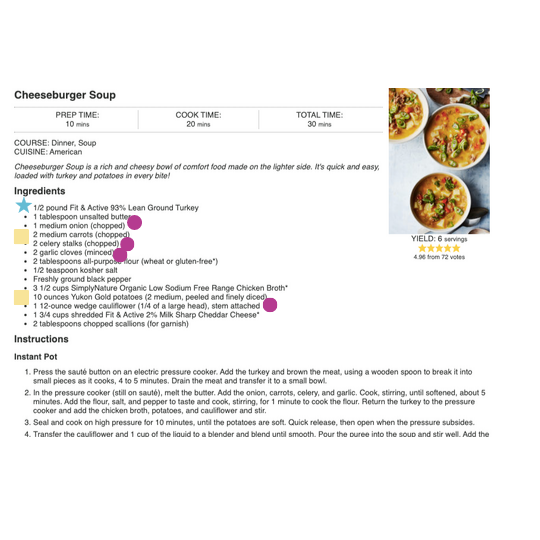 Step 3: Balance your plate
Step 3: Balance your plate
Now that you’ve identified each group, make some tweaks to ensure you’re getting:
- Enough protein – I almost always end up doubling this in soup or casserole recipes
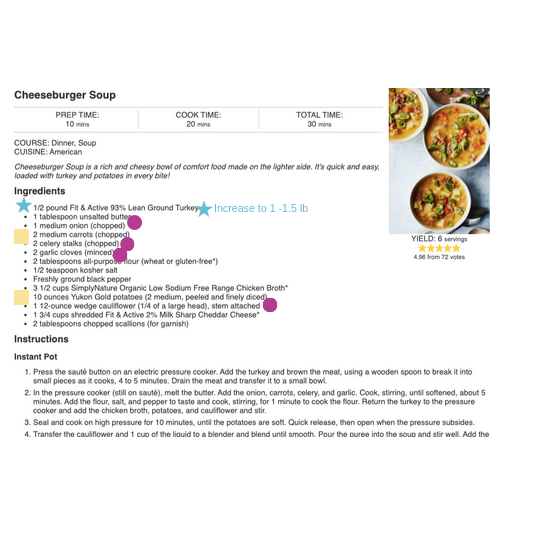
- Plenty of veggies – I often double what’s called for, and stir in wiltable greens like spinach or arugula in the final minutes for an extra boost.
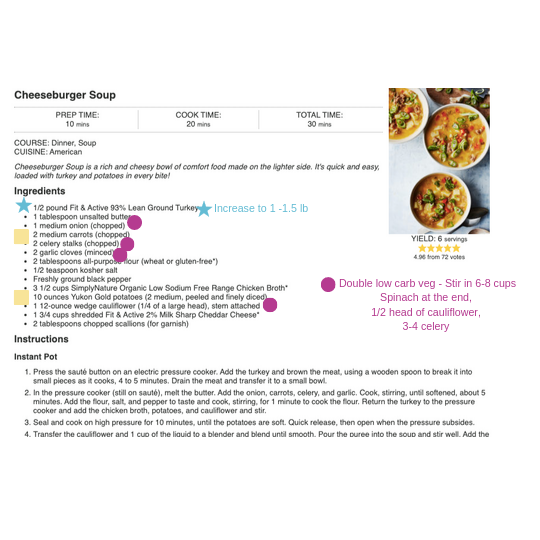
- The right amount of carbs – this will change depending on your goals. I find many soup/casserole style recipes to be heavy handed so often decrease it to meet my needs – although I’m active throughout the week, I sit allllll day long with clients and find steadier energy with a small amount at each meal. If you do a ton of endurance or high intensity workouts you might need a bit more!
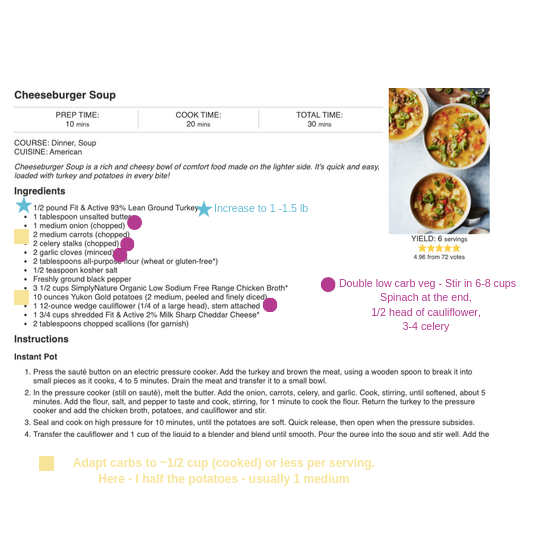
Pro tip – if a recipe includes dry rice or grains, it usually triple in volume when finished cooking so use that as your guide.
- Example: Our goal is ~1/2 cup of carb per bowl. Our recipe makes 8 servings.
- 8 servings x 0.5 cups = 4 cups cooked rice/starchy veg for the entire recipe.
- Divide 4 cups by 3 if using a dried product like rice or quinoa- 1 1/3 cups dry per recipe
Bonus Step: Make Healthier Swaps
For me, this is all about either upping nutrient content or choosing less processed foods. For example, in this recipe I use 1 cup of aged white cheddar instead of the low fat stuff – much less processed, much more flavour and filling factor. Other swaps I use often are:
- wild rice instead of white
- regular instead of low fat cheese/salad dressings/sour cream
- darker leafy greens (like romaine, Greenleaf, spinach, arugula) instead of iceberg
- olive or avocado oil instead of vegetable oil
- butter instead of margarine
- amp up veggies by swapping cauliflower rice or zucchini noodles
Loved this post? It originally went out to our email newsletter, but got so much feedback I wanted to share it here. If you’d like to get in on our emails all things nutrition so you can get clarity and confidence on what you’re eating, join us here!



